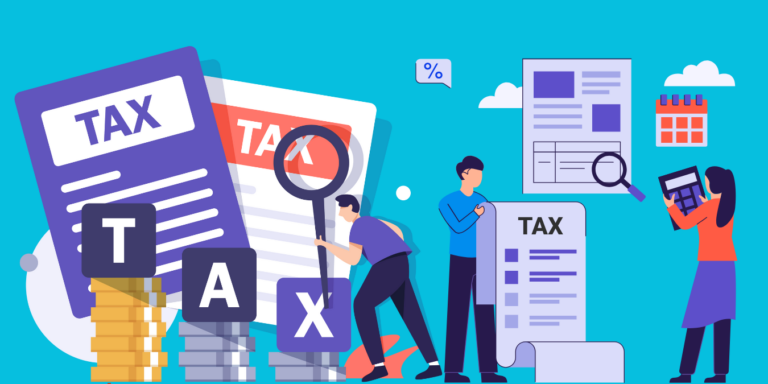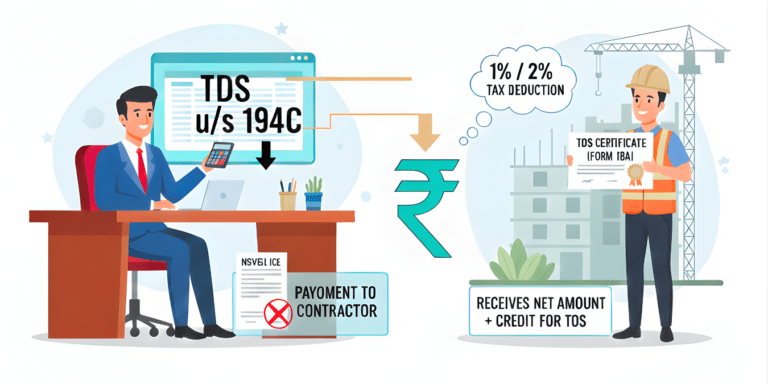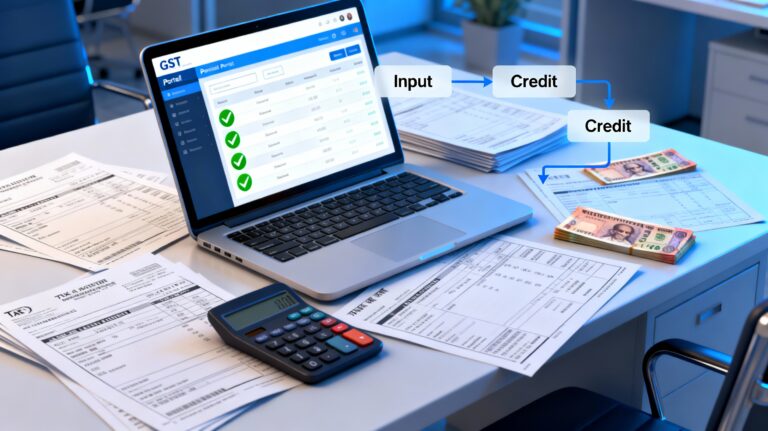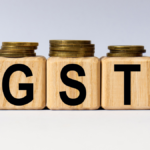
” How to save money with the old tax regime! Learn about the 5 essential sections—Section 80C, 80D, 24(b), 80E, and 80G—that offer significant tax benefits. Maximize your tax savings with these expert tips and strategies. Perfect for optimizing your tax planning and reducing liability. “
Navigating the Indian tax system can be challenging, especially with the introduction of the new tax regime. However, the old tax regime still offers significant advantages for taxpayers who can leverage various deductions and exemptions to reduce their tax liability. In this comprehensive guide, we will explore five crucial sections under the old tax regime that you must know to save money. These sections are Section 80C, Section 80D, Section 24(b), Section 80E, and Section 80G. By understanding and utilizing these sections effectively, you can maximize your tax savings.
Section 80C: Deductions on Investments and Expenditures
Section 80C is one of the most popular and widely used sections for tax deductions under the old tax regime. It allows taxpayers to claim deductions on a variety of investments and expenditures, up to a maximum limit of ₹1.5 lakh per financial year. Here are some key investments and expenditures eligible for deduction under Section 80C:
- Public Provident Fund (PPF): Contributions to PPF accounts are eligible for deduction under Section 80C. PPF is a long-term investment option with a tenure of 15 years, offering attractive interest rates and tax-free returns.
- Employee Provident Fund (EPF): Contributions made by employees to their EPF accounts are also eligible for deduction. EPF is a retirement savings scheme for salaried employees, providing a secure corpus for post-retirement life.
- National Savings Certificate (NSC): Investments in NSC are eligible for deduction under Section 80C. NSC is a fixed-income investment scheme with a tenure of 5 years, offering guaranteed returns.
- Life Insurance Premiums: Premiums paid for life insurance policies for self, spouse, and children are eligible for deduction. This includes traditional life insurance policies, term insurance, and unit-linked insurance plans (ULIPs).
- Tuition Fees: Tuition fees paid for the education of up to two children are eligible for deduction under Section 80C. This includes fees paid to any university, college, school, or other educational institution in India.
- Home Loan Principal Repayment: The principal component of home loan repayments is eligible for deduction under Section 80C. This provides a significant tax benefit for homeowners.
- Equity-Linked Savings Scheme (ELSS): Investments in ELSS funds are eligible for deduction under Section 80C. ELSS is a type of mutual fund with a lock-in period of 3 years, offering the potential for high returns along with tax benefits.
By strategically investing in these instruments, taxpayers can effectively reduce their taxable income and save money.
Section 80D: Deductions on Health Insurance Premiums
Section 80D provides deductions for premiums paid towards health insurance policies. This section is particularly important for individuals and families looking to secure their health while also saving on taxes. Here are the key provisions under Section 80D:
- Self, Spouse, and Children: Taxpayers can claim a deduction of up to ₹25,000 for premiums paid towards health insurance policies for self, spouse, and dependent children. If the taxpayer or spouse is a senior citizen (aged 60 years or above), the deduction limit increases to ₹50,000.
- Parents: An additional deduction of up to ₹25,000 is available for premiums paid towards health insurance policies for parents. If the parents are senior citizens, the deduction limit increases to ₹50,000.
- Preventive Health Check-ups: Taxpayers can also claim a deduction of up to ₹5,000 for expenses incurred on preventive health check-ups. This limit is included within the overall limit of ₹25,000 or ₹50,000, as applicable.
- Medical Expenditure for Senior Citizens: If no health insurance is available for senior citizens, taxpayers can claim a deduction of up to ₹50,000 for medical expenses incurred for them.
By availing of these deductions, taxpayers can significantly reduce their tax liability while ensuring adequate health coverage for themselves and their families.
Section 24(b): Deductions on Home Loan Interest
Section 24(b) allows taxpayers to claim deductions on the interest paid on home loans. This section is particularly beneficial for homeowners with outstanding home loans, as it provides substantial tax relief. Here are the key provisions under Section 24(b):
- Self-Occupied Property: For a self-occupied property, taxpayers can claim a deduction of up to ₹2 lakh per financial year on the interest paid on home loans. This deduction is available for loans taken for the purchase, construction, repair, renewal, or reconstruction of the property.
- Let-Out Property: For a let-out property, there is no upper limit on the deduction for interest paid on home loans. Taxpayers can claim the entire interest amount as a deduction, reducing their taxable income significantly.
- Pre-Construction Interest: Interest paid during the pre-construction period can also be claimed as a deduction. This interest can be claimed in five equal installments starting from the year in which the construction is completed.
By leveraging the deductions available under Section 24(b), homeowners can reduce their tax burden and save money on their home loan interest payments.
Section 80E: Deductions on Education Loan Interest
Section 80E provides deductions for the interest paid on education loans. This section is particularly beneficial for individuals who have taken loans to pursue higher education. Here are the key provisions under Section 80E:
- Eligibility: The deduction is available for loans taken for higher education for self, spouse, children, or a student for whom the taxpayer is a legal guardian.
- Amount of Deduction: There is no upper limit on the amount of deduction for interest paid on education loans. The entire interest amount can be claimed as a deduction.
- Duration: The deduction is available for a maximum of 8 years, starting from the year in which the interest payment begins or until the interest is fully paid, whichever is earlier.
By claiming deductions under Section 80E, taxpayers can reduce their taxable income and make higher education more affordable.
Section 80G: Deductions on Donations to Charitable Institutions
Section 80G provides deductions for donations made to specified charitable institutions and funds. This section encourages taxpayers to contribute to social causes while also availing tax benefits. Here are the key provisions under Section 80G:
- Eligible Donations: Donations to specified funds, charitable institutions, and relief funds are eligible for deduction under Section 80G. Some examples include the Prime Minister’s National Relief Fund, National Defence Fund, and various recognized NGOs.
- Amount of Deduction: The amount of deduction varies based on the type of institution and the nature of the donation. Donations can be eligible for 100% or 50% deduction, with or without qualifying limits.
- Documentation: To claim the deduction, taxpayers must obtain a receipt from the charitable institution, which includes details such as the name, address, PAN of the institution, and the amount donated.
By making donations to eligible institutions, taxpayers can contribute to social welfare and reduce their tax liability.
The old tax regime offers several opportunities for taxpayers to save money through various deductions and exemptions. By understanding and utilizing Section 80C, Section 80D, Section 24(b), Section 80E, and Section 80G effectively, taxpayers can maximize their tax savings and reduce their overall tax liability. Whether it’s investing in tax-saving instruments, securing health insurance, managing home loan interest payments, funding higher education, or contributing to charitable causes, these sections provide significant financial benefits.
For those looking to optimize their tax planning, it’s essential to stay informed about the latest updates and changes in tax laws. Consulting with a tax professional can also provide personalized advice and strategies to make the most of the available deductions and exemptions.
-
GSTR-1’s Hidden Trap: ₹50K Cash Leak Most Businesses Ignore in 2025
Did you know one GSTR-1 glitch silently drains ₹50K+ monthly from your cash flow—without GST notices? Uncover 2025’s
-
Care Health 96% Claims: Save With Care Health—Policy Secrets (Updated December, 2025)
Care Health’s 96% claims secret hides shocking PED denials—why families rage! Unlimited recharges promise ₹5L to ₹30L magic,
-
Hospital Bill Nightmare Abroad? This Senior Travel insurance Plan Saves Lakhs Instant
Seniors pay ₹8/day for $1M coverage up to 99 years—no tests! But 80% claims fail over hidden traps































